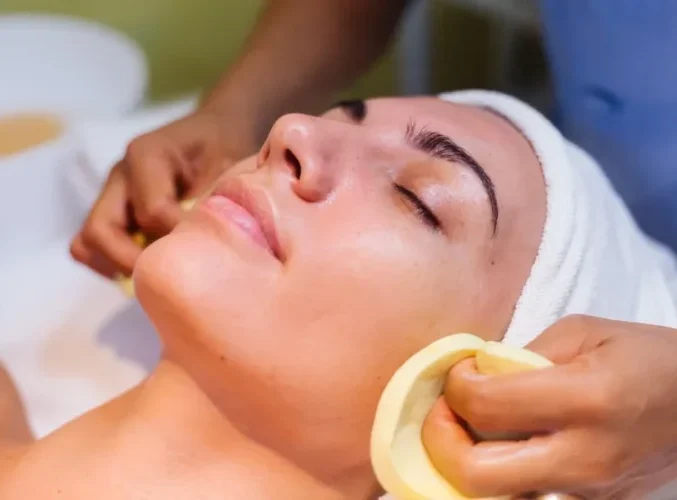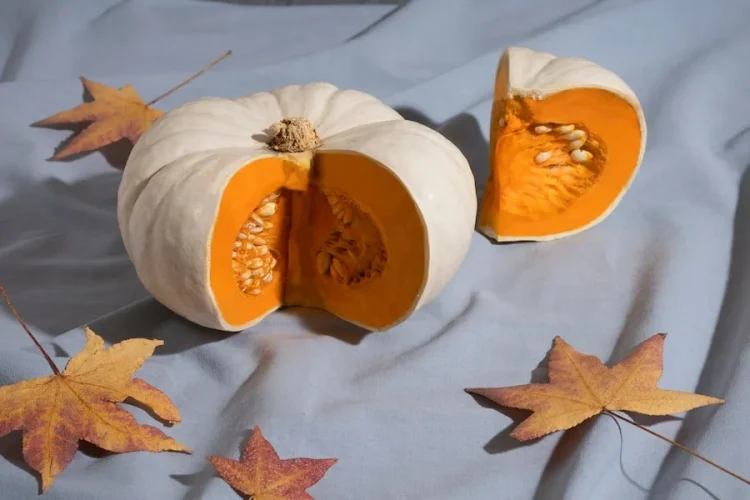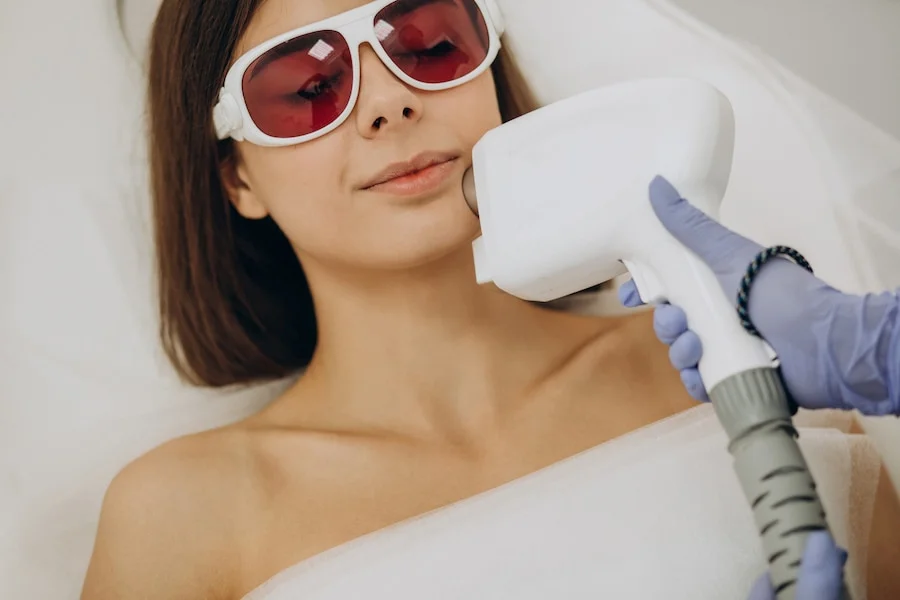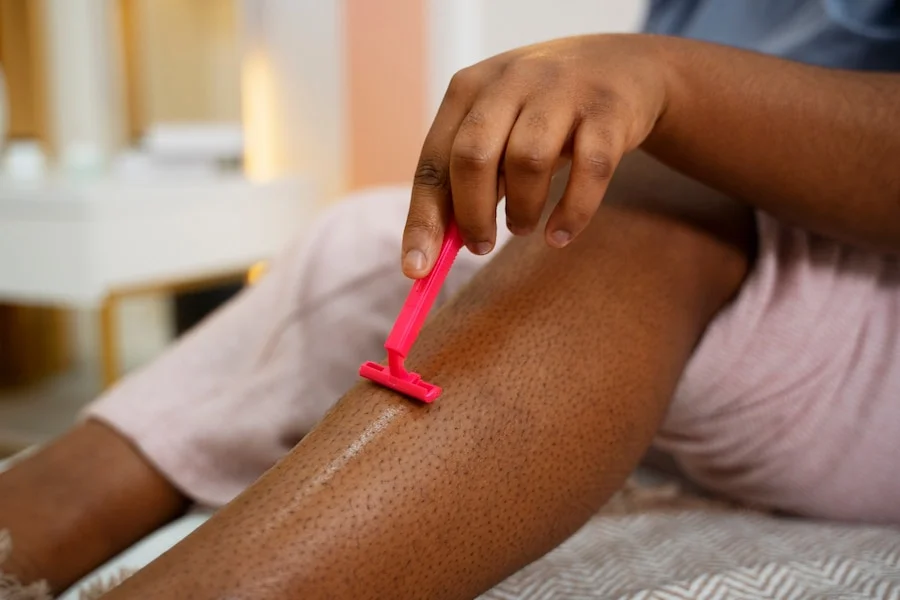Pumpkins are not just for pies and Halloween decorations. They also offer incredible benefits for your skin.
A pumpkin facial rejuvenation treatment is a fantastic way to improve your skin’s health and appearance naturally.
This guide is for skincare enthusiasts and anyone looking to rejuvenate their skin with non-surgical cosmetic treatments.
Let’s dive into the world of pumpkin facials and discover their amazing benefits.
Table of Contents
ToggleWhat is a Pumpkin Facial?
A pumpkin facial is a type of enzyme peel that uses natural pumpkin pulp packed with enzymes, vitamins, and antioxidants. These components work together to exfoliate and nourish the skin, making it smoother, brighter, and healthier.
Pumpkin enzyme facials gently break down dead skin cells, clear debris, and provide hydration. While they offer effective exfoliation and hydration, targeting skin issues like acne, hyperpigmentation, and signs of aging, they are generally more gentle compared to chemical peels.
Chemical peels, however, penetrate deeper layers of the skin, providing more dramatic results for those with more stubborn skin concerns.
Despite this, pumpkin facials remain an excellent option for those seeking a gentler yet effective treatment to achieve a luminous glow and overall skin rejuvenation.
What Does A Pumpkin Facial Do
Pumpkin facials work through the powerful combination of natural ingredients found in pumpkin pulp, including vitamins A and C, alpha-hydroxy acids (AHAs), beta-hydroxy acids (BHAs), zinc, and copper.
These vitamins are essential for boosting collagen production, which helps to reduce fine lines and wrinkles while improving skin texture.
The AHAs and BHAs present in pumpkin help to exfoliate the skin by removing dead skin cells, promoting cell turnover, and unclogging pores.
This process not only smooths the skin but also helps in reducing acne and pigmentation.
Zinc and copper, found in pumpkin, are critical for regulating oil production and reducing pigmentation issues.
Zinc is particularly beneficial for acne-prone skin as it helps to heal and calm inflamed areas, while copper assists in reducing dark spots and enhancing skin tone.
The natural enzymes and antioxidants in pumpkin improve circulation and protect the skin from damage caused by free radicals and UV rays.
This protective action helps to maintain a youthful appearance and promotes overall skin health.
The combined effect of these ingredients results in a comprehensive treatment that addresses multiple skin concerns simultaneously, including hydration, exfoliation, and anti-aging.

Benefits of Pumpkin Facials
Anti-Aging Properties
Pumpkin facials are rich in vitamins A and C, which help to boost collagen production. Collagen is essential for maintaining skin’s elasticity and firmness, reducing the appearance of fine lines and wrinkles.
Acne Treatment and Prevention
The zinc and BHAs in pumpkin facials help to regulate oil production and reduce acne breakouts. They also soothe inflammation and promote healing, making them ideal for acne-prone skin.
Improved Skin Texture and Tone
The exfoliating properties of pumpkin facials remove dead skin cells, revealing smoother and more even-toned skin. This process helps to reduce the appearance of hyperpigmentation and dark spots.
Deep Moisturization and Hydration
Pumpkin is packed with vitamins and minerals that deeply hydrate the skin. This makes pumpkin facials perfect for combating dryness and keeping your skin soft and supple.
Enhanced Skin Clarity and Brightness
The natural enzymes in pumpkin facials improve circulation and promote a healthier, more radiant complexion. Regular treatments can leave your skin looking clearer and more vibrant.
Detailed Procedure of a Pumpkin Facial
Before your pumpkin facial treatment, it’s essential to prepare your skin to ensure the best results.
Avoid using any products containing retinoids or alpha hydroxy acids (AHAs) for at least one week before your appointment.
These ingredients can increase your skin’s sensitivity and may cause irritation during the treatment.
Additionally, avoid facial waxing for at least two weeks prior to the procedure to prevent excessive skin sensitivity and potential discomfort.
Step-by-Step Process of Pumpkin Peel Facial
- The treatment begins with a thorough cleansing of your face to remove any makeup, oil, and dirt. This step ensures that your skin is free of impurities, allowing the pumpkin peel to penetrate deeply and work more effectively.
- A gentle exfoliant is then applied to prime your skin. This helps to remove dead skin cells and further prepares your skin for the pumpkin peel.
- The esthetician will apply a thin layer of pumpkin peel to your face. The peel contains natural enzymes and vitamins from pumpkin, which help to exfoliate and nourish the skin. You may feel a warm, tingling sensation, and in some areas, it might feel hot for a few minutes. This is normal and indicates that the peel is working.
- Once the peel has been on your skin for the appropriate amount of time (usually 5-10 minutes), the esthetician will apply a neutralizing solution. This stops the peel from continuing to react and helps to calm the skin.
- After neutralizing the peel, the esthetician will cleanse your skin thoroughly to remove any remaining residue. Then, a hydrating moisturizer is applied to nourish and soothe your skin.
- Finally, a broad-spectrum SPF is applied to protect your skin from UV rays. This is crucial as your skin will be more sensitive to the sun following the treatment.
Post-Treatment Care

After your pumpkin facial treatment, it’s important to take proper care of your skin to maintain the results and avoid irritation. Here’s what you should do:
- Immediately after the treatment: Your skin may appear flushed, but the redness should subside within a day or two. Avoid applying any products for the first six hours. Side effects may include stinging, itching, irritation, redness, swelling, tightness, peeling, and scabbing of the skin
.
- Days 0-2: Avoid activities that cause sweating, such as exercise and hot showers. Be gentle with your skin—use a mild cleanser, a gentle moisturizer, and at least SPF 30 sunblock. Protect your skin from direct sun exposure with a broad-spectrum sunscreen for at least three days post-treatment to prevent hyperpigmentation. Wearing a hat can provide additional protection if necessary.
- Days 2-3: Peeling may begin anywhere from 2 to 3 days post-peel. Resist the urge to pick at the flaking skin. Your skin may feel tight. Continue moisturizing with a gentle moisturizer that contains no active ingredients like AHAs, BHAs, or retinoids.
- Days 3-10: You may experience ongoing skin flaking and increased sensitivity depending on your skin type and home care regimen. Continue using a mild cleanser, gentle moisturizer, and SPF 30 sunblock.
- Days 10 onwards: Once your skin has healed, you may reintroduce retinoids and/or alpha hydroxy acid products (AHAs). If you are unsure, always consult your aesthetician for recommendations, as everyone’s skin is different.
Who Can Benefit from a Pumpkin Facial?
Pumpkin facials are suitable for all skin types, including sensitive skin. They are particularly beneficial for individuals with hyperpigmentation, dehydrated or dull skin, acne-prone skin, aging skin, dark circles, and photo-damaged skin.
These treatments address various skin concerns by exfoliating, nourishing, and rejuvenating the skin, making them a versatile option for many skincare needs.
Potential Side Effects of Pumpkin Facial Treatment
Some people may experience mild redness, stinging, or tightness after a pumpkin facial.
However, these effects typically subside within a day or two. To minimize risks, it is crucial to follow pre- and post-treatment care instructions closely.
Additionally, using sunscreen regularly will help protect your skin from sun damage, ensuring the best results from your pumpkin facial treatment.
Comparing At-Home and Professional Pumpkin Facial Peels
Professional pumpkin peels often offer more significant results compared to at-home treatments, primarily due to their higher concentration of active ingredients.
These peels are administered by trained aestheticians who can tailor the treatment to your specific skin type and concerns, ensuring both safety and effectiveness.
They provide deep exfoliation, which can be particularly beneficial for addressing more pronounced skin issues such as deep wrinkles, hyperpigmentation, or severe acne.
In contrast, at-home pumpkin peels are designed to be more gentle, making them suitable for regular use and for those with sensitive skin.
While they may not offer the same level of exfoliation as professional treatments, they are effective for maintaining healthy skin and addressing milder concerns.
At-home peels are convenient and more cost-effective, making them an excellent option for routine skincare maintenance.
It’s important to carefully follow the instructions provided with any at-home peel to avoid over-exfoliation, which can lead to irritation or other skin issues.
Balancing the use of at-home peels with occasional professional treatments can help maintain a healthy, glowing complexion.
Do It Yourself Pumpkin Facial
Pumpkins aren’t just for pies and Halloween decorations; they’re a powerhouse ingredient for skincare, packed with nutrients that benefit all skin types.
A DIY pumpkin facial can brighten your complexion, exfoliate dead skin cells, and provide deep hydration. Plus, it’s easy to make at home with ingredients you probably already have in your kitchen.
Ingredients for a DIY Pumpkin Facial
- Pumpkin puree: Rich in vitamins A, C, and E.
- Honey: A natural moisturizer with antibacterial properties.
- Pumpkin seed oil: Optional, but great for mature or dry skin.
- Cinnamon: Adds an aromatic scent and has antibacterial benefits.
- Apple cider vinegar: Helps exfoliate and balance skin’s pH.
To make the mask, simply mix these ingredients in a bowl until you reach a smooth consistency. Apply to clean skin, avoiding the sensitive eye area. Leave it on for 10-15 minutes, then rinse with warm water for a refreshed, glowing complexion.
What Does a Pumpkin Overnight Face Mask Do?
A pumpkin overnight face mask is a fantastic way to give your skin a nutrient boost while you sleep. These masks harness the power of pumpkin’s vitamins and enzymes to provide several benefits:
- Deep Hydration: Pumpkins are rich in water and vitamins that hydrate and nourish the skin.
- Exfoliation: Enzymes in pumpkin gently remove dead skin cells, leaving your skin smoother and more radiant.
- Antioxidant Protection: Vitamins A, C, and E help combat free radicals, which can cause premature aging and skin damage.
Using an overnight mask allows these beneficial ingredients to penetrate deeply, maximizing their effects. Always follow the product instructions and ensure it is suitable for overnight use.
How to Make a Pumpkin Facial Mask At Home
Making a pumpkin facial mask at home is simple and cost-effective. Here’s a quick guide to crafting your own:
Ingredients:
- ½ cup of pumpkin puree (fresh or canned)
- 1 tablespoon of honey
- 1 tablespoon of pumpkin seed oil (optional)
- 1 teaspoon of ground cinnamon
- 1 teaspoon of apple cider vinegar
Instructions:
- Cook and Puree the Pumpkin: If using fresh pumpkin, steam or bake it until soft. Puree until smooth.
- Mix the Ingredients: Combine all ingredients in a bowl, mixing well to create a uniform paste.
- Application: Apply to clean skin, avoiding the eyes. Leave the mask on for 10-15 minutes.
- Rinse and Moisturize: Rinse with warm water and follow with your favorite toner and moisturizer.
You can adjust the ingredients based on your skin type or preferences. For a thicker consistency, add more honey or pumpkin seed oil.
How Often Should You Use a Pumpkin Mask?
Using a pumpkin mask can be beneficial, but it’s important not to overdo it. For most skin types, using a pumpkin mask 1-2 times a week is sufficient.
This frequency allows your skin to benefit from the mask’s exfoliating and hydrating properties without over-exfoliating, which can lead to irritation.
If you have sensitive skin, you may want to start with once a week and see how your skin responds. It’s always a good idea to patch test a new mask on a small area of your skin before applying it to your face.
How Long Should I Leave Pumpkin on My Face?
When using a pumpkin face mask, the duration it stays on your skin can vary based on your skin type and the specific mask’s ingredients. Generally, it’s recommended to leave a pumpkin mask on for:
- Sensitive Skin: 3-5 minutes, especially if you feel a tingling sensation.
- Normal to Oily Skin: 10-15 minutes to allow the enzymes and nutrients to penetrate and work effectively.
It’s important not to exceed the recommended time, as leaving the mask on too long can cause irritation or dryness. After removing the mask, rinse thoroughly with warm water and follow with your regular skincare routine.
Best Pumpkin Facial Cost in Canada
The cost of a pumpkin peel facial in Canada can vary quite a bit, depending on a few key factors.
Things like the location of the spa or clinic, the experience of the esthetician, and the specific ingredients used in the treatment can all play a role in determining the price.
While it’s hard to pin down an exact average across the country, you can generally expect to pay anywhere between $100 and $300 CAD for this type of facial.
It’s a good idea to shop around and compare prices by checking out the websites of different spas and clinics in your area.
While Dr. Lian Beauty doesn’t offer pumpkin peel facials, We do provide a wide range of chemical peel treatments tailored for all skin tones.
Chemical peels offer the benefit of being more customizable, with different formulations that can address a variety of skin concerns, making them a versatile alternative to a pumpkin facial.
Conclusion
Pumpkin facial treatments are a natural and effective way to rejuvenate your skin. By incorporating the powerful enzymes and vitamins found in pumpkin, these treatments can help to exfoliate, nourish, and brighten your complexion.
Whether you choose professional treatments or at-home products, consistent use can lead to smoother, more radiant skin.
Always consult with a qualified aesthetician to determine the best approach for your skin type and needs.
Quick Links:

Dr. Lian Peter, MD, MPH, CCFP, is a Family physician with a passion for aesthetics. In her aesthetic clinic, she provides a wide range of minimally invasive and non-invasive procedures, constantly honing her skills to deliver exceptional care and help patients attain their desired appearance.






